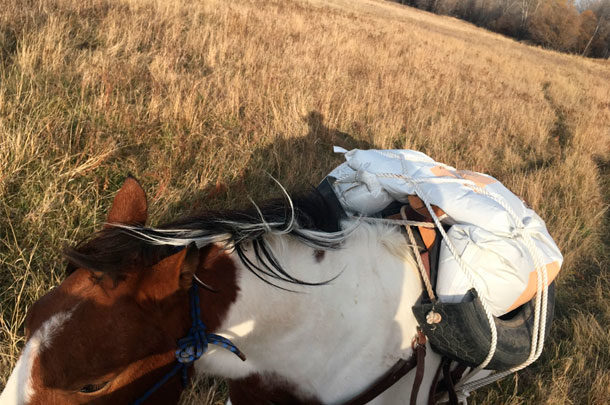One of the characteristics of a ruminant animal is that it can harvest large amounts of nutrients, store it, ruminate on it, endure short-term periods of deprivation and then go make a large harvest again.
This is why they can graze a couple times a day and lay around for a large part of the time ruminating and digesting, or only drink water once a day or, sometimes, every other day (weather dependent). Monogastrics such as a horse or a human have a harder time existing this way as we need more constant input. These differences often lead us as human, monogastric, managers of ruminant livestock to complicate matters more than needed.
Our worldview tends to derive from our personal perspectives, therefore, we often manage ruminant diets as we would want our diet managed. We want three meals a day with lots to drink, our daily supplements and, preferably, a dessert as well. As a result, we tend to want to provide a fully balanced daily ration to our ruminants, ensuring they get an exact daily amount of salt, mineral, protein, energy and water. In feedlots and dairies, facilities and total mixed ration (TMR) feed trucks make this practical.
Meanwhile back at the ranch, this is near impossible and not remotely practical. We need to utilize the ability of ruminants to take nutrients in on the law of average consumption and cull the animals that can’t. Oversupplementing can’t be allowed to take the place of genetic selection, otherwise, we can supplement and inject ourselves into bankruptcy.
I’ve had folks express worry over three topics more than any other nutrition topics in the past 10 years: overconsumption of free choice supplements, timed protein supplementation and loss of body condition.
Don’t overcomplicate it. First, free-choice supplements can and should be rationed; if someone is telling you they have to have it front of their noses all the time, they just want to sell you more stuff. There are times to do that, such as weaning and tetany season, but these are the exception and not the rule. If you put out a week’s worth of mineral or protein, and it’s gone after five days, no worries. As long as it isn’t consumed so quickly that every animal doesn’t have opportunity to get a little, then let the laws of averages work in your favor.
Common sense tells us that if it’s gone in two or three days, we may need to look at the cause of that and adjust the program. Most minerals and vitamins get stored in the animal for future use when needed, allowing for short-term periods of deprivation, and the animal still maintains adequate nutritional status.
The same goes for proteins. The general consensus is that rumen microbe populations take approximately five days to change. For this reason, many people who feed alfalfa, cake or some other type of fed protein source only do it twice a week. For this reason, if you use a liquid or compressed protein block or tub and it’s gone after four to five days, chances are that animal is just fine. Keep an eye on the manure, and see if it looks too fibrous in too many piles (there will always be a few, look at the 75% majority), then adjust from there.
Bear in mind that there will always be animals that overconsume and those that barely consume any at all no matter how you are supplementing. Some animals don’t do well in this type of environment. Rather than up the level of supplementation for the 5% to 10% that don’t seem to be doing well, pull them from the herd, manage them differently and mark them for culling at the most opportune time. Do not let yourself fall into the trap of creating a herd that is highly dependent on inputs. The goal is to provide the necessity, but those that require luxury should jump on the bus to the sale barn.
I may strike a nerve here with some, but the true reality is that stored fat on an animal is an energy reserve. Obviously, we don’t want them to fall below a critical point, and everyone has a differing level of condition they can’t go below depending on calving dates, breeding seasons, etc. We can take advantage of an animal that has excess condition to help them through some harder times of deprivation.
When we look at wildlife, they tend to hunker down during the bad storms, deplete some fat energy to avoid expending more energy to be out in the elements walking around foraging for food. They may lose a little condition over the winter and gain it back in the spring as they are having their young and rebreeding. It’s a natural system of nutritional and reproductive economics when you think about it. For those that have calving dates set in the mid-to-late spring with summer breeding times, there is a little more grace for loss of body condition than those whose calendar is pushed up into the winter. The idea that an animal can’t lose weight under any circumstances simply puts us in the mindset of pushing feed and supplement costs beyond what is profitable.
By following this path, we can ration and set a strict budget for supplement cost, thereby increasing year-end profits. Sometimes, the easiest money to make is the money we simply don’t spend. While we may never achieve the genetic goal of an animal that never needs any supplementation, we can use our management strategies to push for cattle that require fewer inputs. ![]()
PHOTO: Only packing in a one-week ration to cattle saves time, labor, and expense while meeting the cows need, but maintaining a necessary amount of environmental pressure to allow inefficient genetics to be identified and culled from the herd. Photo by Bill Whitehurst.

-
Bill Whitehurst
- Makale Livestock
- Whitehall, Montana
- Email Bill Whitehurst










